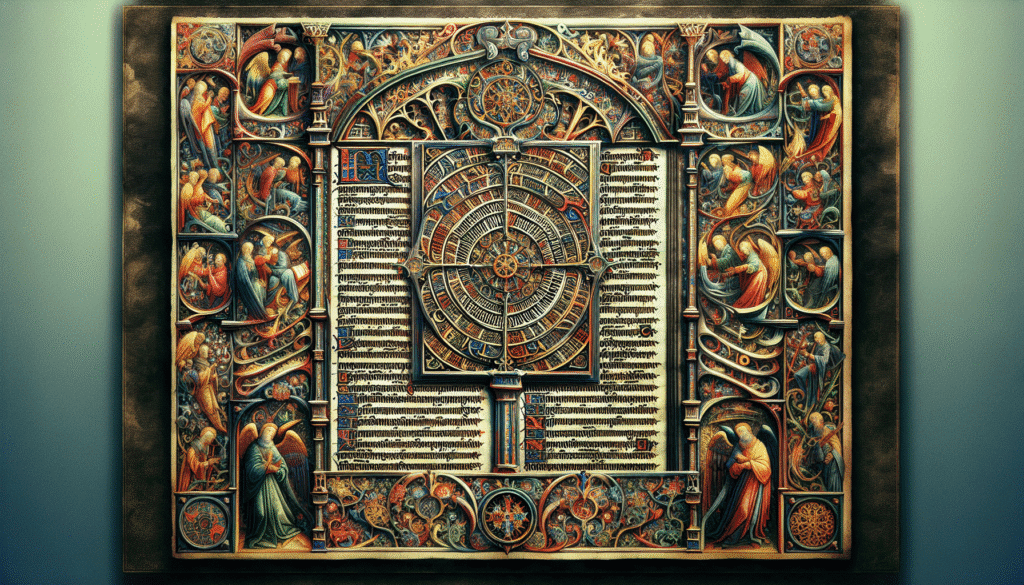Have you ever wondered where you could get an up-close look at high-resolution images of original manuscripts? In the digital age of 2025, the world is filled with vast repositories of these ancient texts, each promising a glimpse into the past through the lenses of high-definition technology. As a proud possessor of a PhD in Historical Theology, I’ve frequently found myself diving into the vaults and archives of the world’s most prestigious libraries and institutions. Whether you’re a scholar, student, or simply a curious mind, understanding the pathways to these manuscripts is essential not just for academics, but for anyone with a thirst for historical knowledge and appreciation of the written word.
High-resolution access to original manuscripts is more critical than ever. For researchers, it means unparalleled access to historical texts without wear and tear. For educators, it revolutionizes the teaching landscape by bringing history into the classroom in vivid detail. In a world where misinformation is rampant, having direct access to original sources ensures authenticity and encourages critical thinking.
TL;DR
- Access to high-resolution manuscripts is invaluable for research, education, and personal enrichment.
- Reputable institutions and libraries provide online databases with comprehensive image collections.
- Many platforms incorporate interactive technology, allowing users to explore manuscripts in unprecedented detail.
- Getting acquainted with these resources boosts understanding of historical contexts and textual nuances.
- In-person visits and online resources both offer unique benefits.

Locations for Viewing High-Res Manuscripts
Major Online Repositories
Several institutions have committed to digitizing their collections, making them accessible online. These platforms not only offer a treasure trove of resources but also ensure the preservation of fragile texts.
The British Library Digital Manuscripts: The British Library holds one of the largest collections of digitized manuscripts in the world. Its online portal offers various tools to view manuscripts from medieval texts to rare incunabula.
The Vatican Library Digitization Project: With thousands of manuscripts at their disposal, the Vatican Library is digitizing their collections, making them available to scholars and enthusiasts worldwide.
Europeana Manuscripts: A digital platform that provides access to European cultural heritage, the Europeana collections offer a wide range of manuscripts, including illuminated and medieval texts.
National Library of Australia’s Trove: An extensive database of digitized manuscripts, including historically significant Australian documents.
The Digital Walters: Hosted by the Walters Art Museum, this collection includes high-resolution images of illuminated manuscripts.
These repositories are designed to make accessing historical content easier, with advanced features allowing zooming, annotation, and even textual analysis.
Notable Libraries and Archives
Visiting libraries and archives in person offers a unique experience. Holding a manuscript in your hands and sensing its weight and texture adds an unparalleled depth.
The Library of Congress, Washington D.C.: Housing diverse manuscripts, it also offers guided tours of its rare collections.
Bibliothèque nationale de France: With one of the richest collections globally, it includes significant medieval and renaissance manuscripts.
Bodleian Library, Oxford: As one of the oldest libraries in Europe, it holds invaluable historical texts including the original copies of famous works.
New York Public Library’s Special Collections: Offers an array of unique materials, including original drafts and annotated manuscripts of famous authors.
The advantage of visiting in person is the direct access to experts and the potential for handling rare works under supervision, an experience that’s as educational as it is exhilarating.
Incorporating Manuscripts into Learning
Bringing high-resolution manuscripts into educational settings opens new avenues for engagement and learning.
Virtual Classrooms: Online repositories can help students understand historical context firsthand by analyzing primary sources.
Interactive Learning Modules: Platforms like Omeka or Scalar can be incorporated into curriculum, allowing students to engage with manuscripts dynamically.
Research Projects: Undergraduates and graduate students can dive deeper into specific topics, using digitized material for thesis or dissertation work.
Using technology to bring these manuscripts into classrooms not only enhances learning but fosters appreciation for historical resources.
Personal Experience Insights
Whenever you have the chance to explore these manuscripts, the insight gained is transformative. I once visited the manuscript vaults of the British Library. Holding an original copy of a medieval manuscript was surreal, connecting me with the writer’s world centuries before. You feel the personal touch of history, the weight of words, and the story each page tells. Such experiences enrich both personal knowledge and professional expertise.
Preserving History Through Technology
The digitization of manuscripts plays a crucial role in historical preservation. With high-resolution imaging, these documents are safeguarded for future generations.
Increased Accessibility: People worldwide, regardless of location, can access rare and fragile texts.
Preservation of Originals: As digital versions are used for study, the physical copies undergo less handling, preserving them longer.
Advanced Imaging Techniques: Technologies such as multispectral and hyperspectral imaging reveal information undetectable to the naked eye, such as erased texts or hidden features.
Digitizing manuscripts not only conserves them physically but enhances our understanding and interpretation of historical documents.
FAQs
What is a high-resolution manuscript image?
High-resolution manuscript images are digital images that allow detailed examination of original documents, often revealing textual and material nuances that aren’t visible to the naked eye.How can I view these manuscript images?
Many are available through digital repositories and library collections online. Some institutions require free registration while others are open access.Why are high-resolution images important?
They preserve the original documents by reducing handling and make them more accessible for research without degradation of the primary source material.Can I request a specific manuscript to be digitized?
Many libraries allow users to request digitization of materials not yet available online, subject to their digitization policies and resources.Are these digital manuscripts free to access?
Most libraries offer free access; however, some might require subscriptions or institutional access, particularly for comprehensive tools and resources.

People Also Ask
Can anyone visit the British Library?
Yes, the British Library is open to the public, but accessing certain collections may require a Reader Pass.What makes a manuscript significant?
Its historical, religious, or cultural value often determines significance, along with its rarity and condition.Are there modern manuscripts being digitized?
Yes, modern manuscripts, especially those of noteworthy authors and figures, are increasingly subject to digitization.How do libraries protect original manuscripts?
Libraries employ climate control, restricted access, and specialized storage to preserve these texts.What technologies enhance manuscript study?
Techniques like multispectral imaging and digital text analysis are at the forefront of modern manuscript study.
Unlocking the world of high-resolution manuscripts enriches your understanding of history and connects you to cultures of the past. By exploring these storied texts, whether online or in person, you contribute to the preservation and dissemination of human knowledge across centuries and frontiers.



